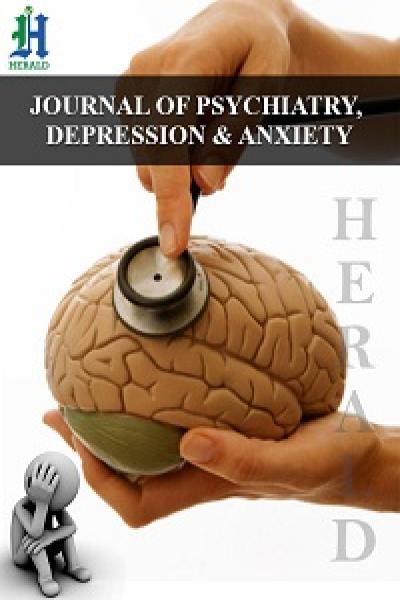
Assessment of the Quality of Life of Young Men Suffering From Epilepsy
*Corresponding Author(s):
Anna VoitiukDepartment Of Neurology And Child Neurology, Kharkiv Medical Academy Of Postgraduate Education, Kharkiv, Ukraine
Tel:+380509081085,
Email:a_vojtyuk@yahoo.com
Abstract
Keywords
INTRODUCTION
According to the consensus of the International League Against Epilepsy (ILAE) and International Bureau for Epilepsy (IBE), epilepsy is a disease of the brain defined by any of the following conditions:
1. At least two unprovoked (or reflex) seizures occurring >24 h apart.
2. One unprovoked (or reflex) seizure and a probability of further seizures similar to the general recurrence risk (at least 60%) after two unprovoked seizures, occurring over the next 10 years.
3. Diagnosis of an epilepsy syndrome.
According to the World Health Organization, about 50 million people worldwide suffer from epilepsy, 2.5 million new cases of the disease are diagnosed annually.
Recently, quite a lot of publications devoted to the problems of epilepsy in women. However, this disease affects not only women and children, but also men [1-3].
This disease has a significant negative impact on all areas of the patient's functioning, reducing the quality of life. In everyday life, men with epilepsy regularly experience difficulties. Basically, it is a decrease in social and personal ambitions, low self-esteem compared to healthy people, an increase in the level of anxiety and depression. Depression in people with epilepsy is often manifested by symptoms that can be regarded as both side effects of AEDs, and as manifestations of epilepsy per se (sleep disorders, changes in appetite, behavioral disorders, inhibition or excessive excitability, etc.) [4,5].
The purpose of the study is to assess the Quality of Life (QL) of young men aged 18-44 years with epilepsy, to determine the leading mechanisms of psychological protection and their effectiveness.
METHODS
RESULTS
Approximately one in nine men with epilepsy was diagnosed with major depressive disorder. Under diagnosis of mental health issues, like depression, in men may be the result how men manifest symptoms. Various factors lead many men to exhibit depressive feelings through male-typical depressive symptoms. These symptoms can include aggression, irritability, violence, substance abuse, risky behavior, or somatic complaints (Table 1). Since many male-typical symptoms of depression are externalized, they not only affect the well-being of depressed men but also the individuals in their lives. Depressed men are also less likely to demonstrate positive parental behaviors such as nurturing, warmth, sensitivity, and engagement, and more likely to be withdrawn, negative, and detached (Table 2).
|
Features of depression and dysthimia |
|
Depressed mood |
|
Anhedonia |
|
Worthlessness |
|
Guilt |
|
Decreased concentration |
|
Reccurent thoughts of death |
|
Weight loss or gain |
|
Insomnia or hypersomnia |
|
Psychomotor agitation or retardation |
|
Fatigue |
|
Difference in depression and dysthimia |
|
|
Major Depressive Episode |
Dysthimic Disorder |
|
|
Early age epilepsy onset means a higher risk of suicide in men. A different pattern of variables was obtained for males, consisting mostly of values of daily doses of certain Anti-Epileptic Drugs (AEDs), that is, Phenobarbital (PHB), Carbamazepine (CBZ), Valproate (VPA), Clonazepam (CNZ). A high daily dose of PHB and high total number of all seizures would imply a higher degree of suicidality. Besides men are four times as likely to die from suicide suggesting that many men have undiagnosed mental health issues.
Seizures aren't the only concern for people with epilepsy. Many also struggle with a suicide risk caused by anti-seizure medications. Some epilepsy drugs might be more dangerous than others when it comes to suicide. The increased risk for suicide and self-harm comes only from newer drugs that are known to be associated with depression. These include levetiracetam, topiramate and vigabatrin. Older drugs and newer drugs that are not associated with depression did not increase the risk of suicide or self-harm, the study found. These drugs include lamotrigine, gabapentin, carbamazepine, valproate and phenytoin. People who were currently using the newer drugs with a high risk for depression were three times more likely to harm themselves or attempt suicide than those who were not taking any epilepsy drugs.
CONCLUSION
REFERENCES
- Cochran SV, Rabinowitz FE (2000) Men and depression: Clinical and empirical perspectives. Academic Press, San Diego, CA.
- Shafer K, Wendt D (2015) Men’s mental health: A call to social workers. Soc Work 60: 105-12.
- Wessmann A, Volk HA, Packer RMA, Ortega M, Anderson TJ (2016) Quality-of-life aspects in idiopathic epilepsy. Vet Rec 179: 229.
- Fenwick P (1992) The relationship between mind, brain, and seizures. Epilepsia 33: 1-6.
- Johnson EK, Jones JE, Seidenberg M, Hermann BP (2004) The relative impact of anxiety, depression, and clinical seizure features on health-related quality of life in epilepsy. Epilepsia 45: 544-550.
Citation: Voitiuk A, Litovchenko TA (2019) Assessment of the Quality of Life of Young Men Suffering From Epilepsy. J Psychiatry Depress Anxiety 5: 018.
Copyright: © 2019 Anna Voitiuk, et al. This is an open-access article distributed under the terms of the Creative Commons Attribution License, which permits unrestricted use, distribution, and reproduction in any medium, provided the original author and source are credited.

